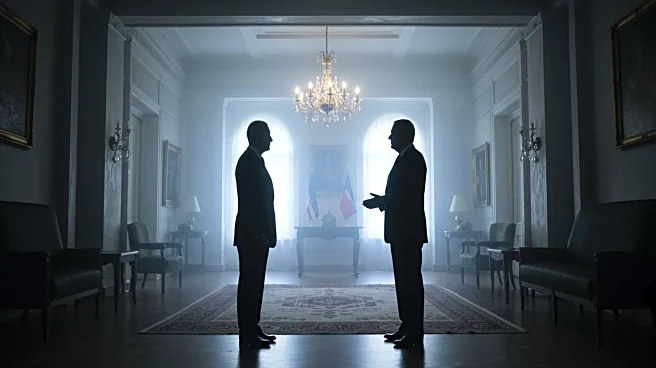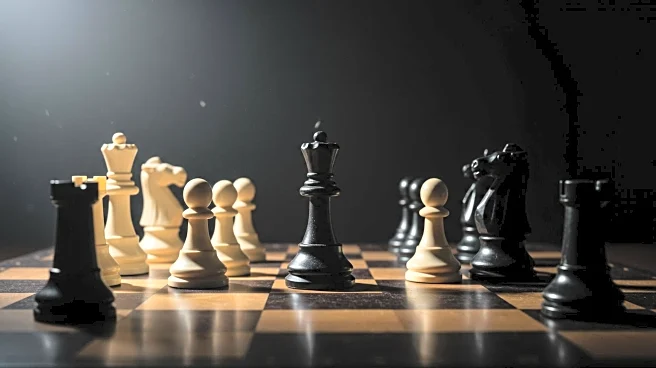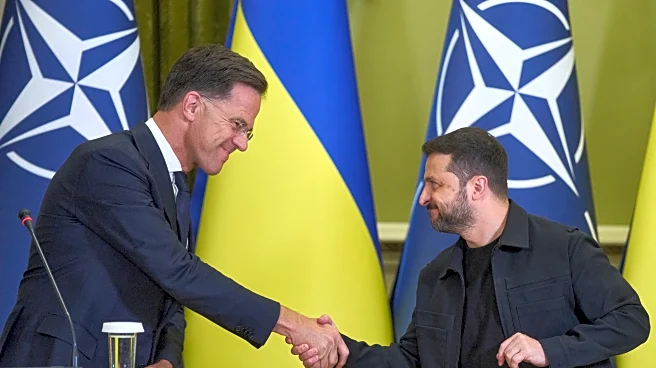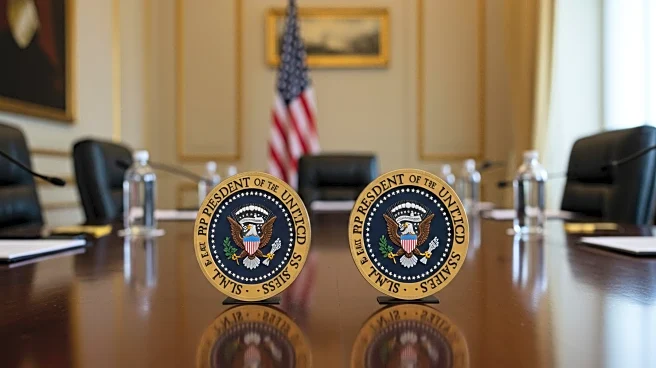What's Happening?
During a recent meeting at the Oval Office, President Trump criticized Ukrainian President Volodymyr Zelenskyy for his choice of attire. In a previous meeting, President Zelenskyy wore a black Henley shirt, which led to criticism from President Trump and a reporter from a right-wing cable channel. The reporter questioned Zelenskyy's decision not to wear a suit, suggesting it was inappropriate for the setting. In response to the criticism, President Zelenskyy altered his wardrobe for the latest meeting, opting for a black canvas blazer over a black collared shirt, though he still chose not to wear a tie. This change in attire was noted by the same reporter, who complimented Zelenskyy on his appearance. President Trump also acknowledged the change, stating that he agreed with the reporter's positive assessment.
Why It's Important?
The exchange highlights the symbolic power of clothing in diplomatic settings and the scrutiny political figures face regarding their public appearances. President Zelenskyy's wardrobe choices have been a topic of discussion since the Russian invasion of Ukraine, as he often opts for a 'bunker-chic' style to reflect the ongoing conflict. The criticism from President Trump underscores the cultural and diplomatic expectations placed on leaders when visiting significant political venues like the Oval Office. This incident also reflects broader themes of how political figures use fashion to convey messages and the potential for attire to influence diplomatic interactions.
What's Next?
The wardrobe diplomacy between President Trump and President Zelenskyy may continue to evolve as both leaders navigate their political relationship. Future meetings could see further adjustments in attire as Zelenskyy balances his wartime image with the formal expectations of international diplomacy. Observers may continue to analyze the implications of these sartorial choices on the diplomatic rapport between the United States and Ukraine.
Beyond the Headlines
The incident raises questions about the role of fashion in politics and how leaders use clothing to communicate their stance and priorities. It also touches on the cultural differences in diplomatic protocols and the potential for misunderstandings or tensions arising from these differences. The focus on Zelenskyy's attire may also reflect broader societal expectations regarding gender and appearance in leadership roles.












